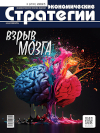DOI: 10.33917/es-2.200.2025.48-53
The article presents distribution of the largest Russian banks by the size of the loan portfolio, which made it possible to substantiate the fact that in the Russian credit system there is a high level of differentiation in interest rates and conditions for attracting loans, which has an ambiguous effect on the quality of the credit process. The author identifies a modern problem of interaction between banking market entities and clients – the presence of high debt on loans, which will allow in the future to develop and apply, within the framework of banks’ credit policy, the most rational repayment scheme.
References:
1. Frygin A.V., Vorob’ev D.R., Prokof’ev M.N. Kreditovanie publichno-pravovykh obrazovaniy kak instrument dolgovoy politiki gosudarstva [Crediting of Public Legal Entities as an Instrument of State Debt Policy]. Bankovskoe delo, 2022, no 7(341), pp. 28–32.
2. Krichevets E.A., Fedosyuk M.Yu. Sravnitel’nyy analiz bankovskogo i obligatsionnogo kreditovaniya predpriyatiy v Rossiyskoy Federatsii [Comparative Analysis of Banking and Bond Lending to Enterprises in the Russian Federation]. Nauka bez granits, 2021, no 2(54), pp. 82–89.
3. Galuzin L.A., Mel’nichenko T.Yu. Analiz kreditnogo portfelya fizicheskikh lits kommercheskogo banka [Analysis of the Loan Portfolio of Individuals of a Commercial Bank]. Vestnik nauki, 2024, vol. 2, no 1(70), pp. 50–58.
4. Nikonov N.V., Sirotkin A.S. Rost roznichnogo kreditovaniya v rossiyskikh regionakh [The Growth of Retail Lending in Russian Regions]. Finansovyy zhurnal, 2019, no 1, pp. 56–65.
5. Bernadina E.E. Upravlenie kachestvom kreditnogo portfelya [Credit Portfolio Quality Management]. Vestnik nauki i tvorchestva, 2021, no 5(65), pp. 14–20.
6. Kuznetsov D.M. Upravlenie kreditnym portfelem banka v usloviyakh sovremennoy ekonomiki [Management the Bank’s Loan Portfolio in the Modern Economy]. Benefitsiar, 2020, no 72, pp. 3–7.
7. Moldabekova A.Sh. Kreditnyy portfel’ kommercheskikh bankov i problemy vozvrata kredita [Loan Portfolio of Commercial Banks and Problems of Loan Repayment]. Forum, 2021, no 1(24), pp. 37–42.
8. Bagaeva N.Yu., Popova L.V. Otsenka kachestva formirovaniya kreditnogo portfelya kommercheskogo banka [Assessment of the Quality of the Formation of the Loan Portfolio of a Commercial Bank]. Aktual’nye voprosy sovremennoy ekonomiki, 2023, no 12, pp. 239–247.
9. Krupneyshie banki po summe kreditov fizlits v 2024 godu [The Largest Banks in Terms of the Amount of Loans to Individuals in 2024]. BROBANK, available at: https://brobank.ru/krupnejshie-banki-po-summe-kreditov-fizlic-v-2024-godu/
10. Myagkova M.V., Kuznetsova E.G., Shilkina T.E. Formirovanie kreditnogo portfelya kommercheskogo banka [Formation of the Loan Portfolio of a Commercial
Bank]. Upravlencheskiy uchet, 2021, no 3, pp. 508–517.
11. Ryabinina E.V. Sovremennoe sostoyanie korporativnogo kreditnogo portfelya rossiyskikh kommercheskikh bankov [The current State of the Corporate Loan Portfolio of Russian Commercial Banks]. Journal of Economy and Business, 2018, vol. 5, part 2, pp. 34–42.













